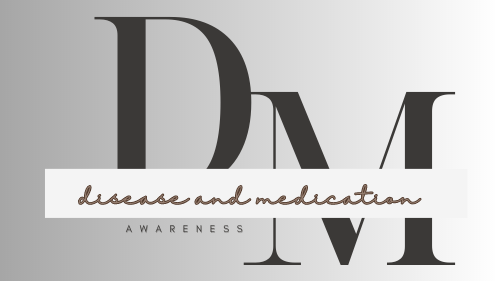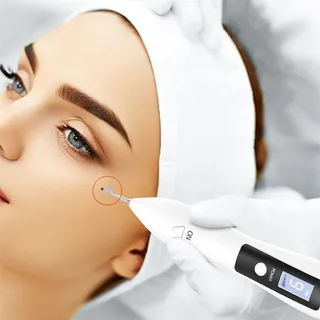Plasma Pen: Non-Surgical Profession Skin Rejuvenator
Regarding skin tightening and wrinkle decrease or overall rejuvenation, patients in the world of modern aesthetic medicine are increasingly demanding non-extensive ways of treating them. The Plasma Pen is one of the best decimations to date, a non-invasive treatment in this type of activity that triggers collagen production and leads to skin regeneration. The technology has become one of the most favored ways in which professionals want to achieve visible and long lasting results without having to take drastic measures such as surgery.
What is a Plasma Pen?
The Plasma Pen is a medical treatment device comprising of plasma energy to renew the skin. This energy produces micro-trauma to the epidermis and at the same time heats up the dermis triggering a natural reparative process that helps trigger the creation of collagen and elastin, two proteins that lead to young plump skin.
The Plasma Pen is different because it produces selective outcomes in contrast to ablative lasers or surgical procedures, which cut the skin off or remove it. The procedure is also referred to as fibroblast therapy which promotes dermal remodeling thus, it is a good option with patients who do not like invasive procedures but need enhancement of their skin texture, elasticity and tone.
Mechanism of Action of Plasma Pen
The process behind Plasma Pen is as follows: the device emits low levels of energy, which makes the solution ionize. The ionized solution then travels to the tip, where it comes into direct contact with the skin. This level of ionized solution is generally non-destructive but it is capable of killing pathogens effectively without doing any harm to the body.
The plasma Pen produces the fine, spot-sized, controlled arc of the plasma energy slightly above the surface of the skin. The effect of this arc is superficial micro-damage prompting wound-healing in the body. As the tissue regenerates, fibroblasts cells get stimulated to produce more collagen and elastin. The effects are tighter, smoother and better structural and elastic skin.
The therapy also enhances tensing of the skin by shrinking the tissues.
Clinical Applications
The Plasma Pen is a multi tool which may be deployed on face and body. It proves particularly good in treating:
- Little wrinkles and wrinkles
- Forehead lines and crow feet lines
- Upper and lower eyelid laxity ( non surgical blepharoplasty )
- Marionette lines and nasolabial lines
- Smoker lines (on the face)
- Princeton on the neck and jaws
- Acne scars and stretch marks
- Pigmentation irregularities
Such versatility in use qualifies the Plasma Pen as an option to treat multiple patients with a variety of cosmetic issues seeking mild-to-moderate improvements with no recovery time compared to that of surgical treatment options.
Treatment Process
The usual surgical procedure of the Plasma Pen includes consulting the patient properly to ensure the overall state of the skin and its type to check the aesthetic intentions. The patient must be the appropriate candidate, in other words, the patient must have fair to medium skin tones (Fitzpatrick I-III), as these respond better to the plasma treatment.
This is to reduce pain through the administration of a topical anesthetic before the procedure. The microthermal trauma point, made by every flash, will scab and fall off subsequently.
The process is usually 30 to 90 minutes, however; this varies under different areas of application. After treatment, the patients may experience minor swelling, redness and development of small carbon crusts, which clears up within 5 to 10 days.
Post-Treatment Care
The implementation of the best outcomes after the care with minimal complications necessitates post-treatment care. Patients are recommended to:
- Do not touch, scratch the carbon crusts
- Maintain the treated place clean and dry
- Sunbathing is discouraged, it is advisable to use SPF after the wounds have healed
- Waiting until the skin heals completely before putting some make up on
- Aftercare products should only be used that have been prescribed
Following the aftercare procedures will make the recovery safe and the treatment more successful.
Results and Expectations
Each case can differ, but in general, most patients can see the improvement on the first visit. Nevertheless, based on the level of the condition and the required result, several treatments can be prescribed. Then, the collagen remodeling has a period of several weeks after the procedure, and the complete effects are usually observed in 8 to 12 weeks.
Plasma Pen treatments have long lasting results of two to three years, ensuring skin rejuvenation has a long term solution.
Benefits of Plasma Pen
A variety of benefits, which the Plasma Pen proposition has over other non-surgical procedures, is as follows:
- Non-invasive None of the cutting, bleeding, or sutures are required
- Limited downtime: The patients can also get back to work after a couple of days
- Precision: Great to treat sensitive or inaccessible parts like eyelids
- Natural effects: It boosts body production of collagen and elastin
- Permanent outcomes: Outcomes may last years with proper care
The Plasma Pen offers a safe, effective and simple to use procedure thus, making it a good option when it comes to those professionals wishing to provide skin rejuvenation in high quality.
Safer and Suitability
Albeit being relatively safe once applied under the supervision of an adequately trained professional, it is essential to examine the patient on a case-by-case basis. Patients with more pigmented skin (Fitzpatrick IV to VI) can be at the increased risk of post-inflammatory hyperpigmentation or hypopigmentation.
A consultation with a professional is necessary to guarantee safety and adapt the course of treatment to the demands and expectations of the patient.
Professional Considerations
The provision of the Plasma Pen treatment should be considered as a need to go through studies and formal certification with the aim to guarantee safe and quality results. The accuracy in handling the device and knowing the structure of skin and wound healing process highlights the significance of professionalism.
Upon that, it is essential to utilize clinically approved Plasma Pen devices of high quality. The existence of numerous counterfeit products on the market potentially creates safety issues and does not guarantee everyone whether products will provide regular outcomes.
Conclusion
The Plasma Pen is a huge breakthrough in non surgical anti-treatment. Its capacity to provide visible, sustainable effects without undergoing surgery is one of the reasons why it is a valuable instrument of aesthetic medicine. The Plasma Pen has all the advantages of regenerating the skin in a natural way and makes it easy for patients to restore firmness, texture, and even a more youthful complexion.
As the rise in demand of non-invasive treatment persist, it is quite certain that the freedom plasma will not have any risk of losing its credibility among aestheticians and consumers. Taught with proper equipment, well trained and with personalized treatment planning, results achieved with the Plasma Pen are not only natural-looking but long-lasting.

